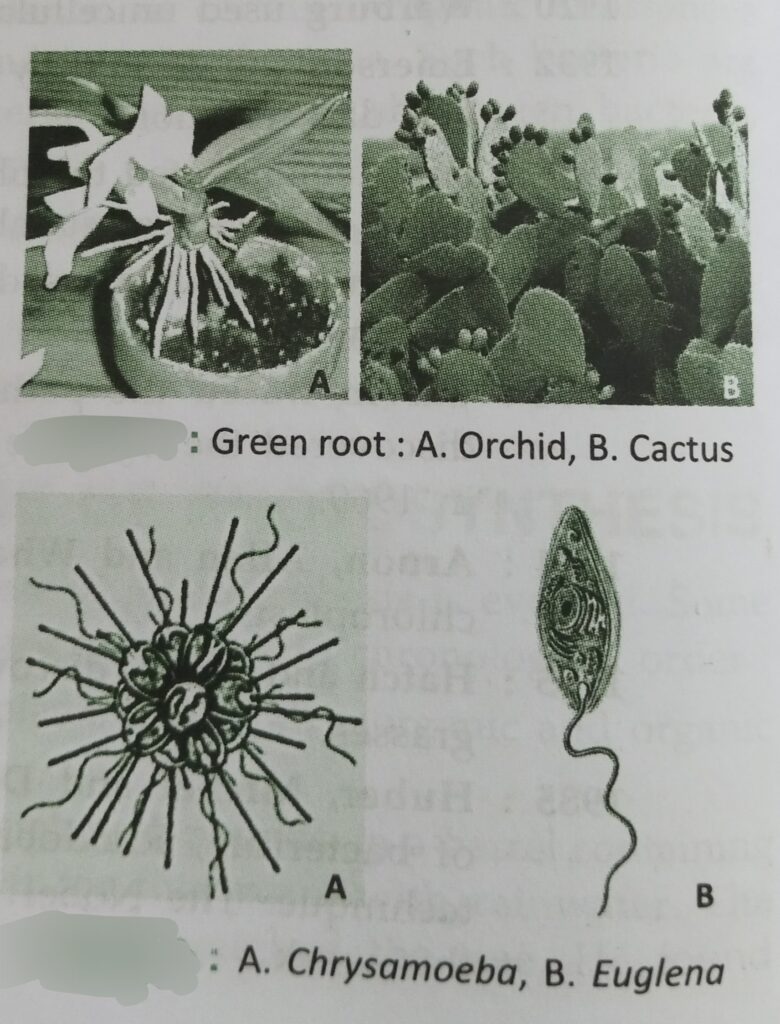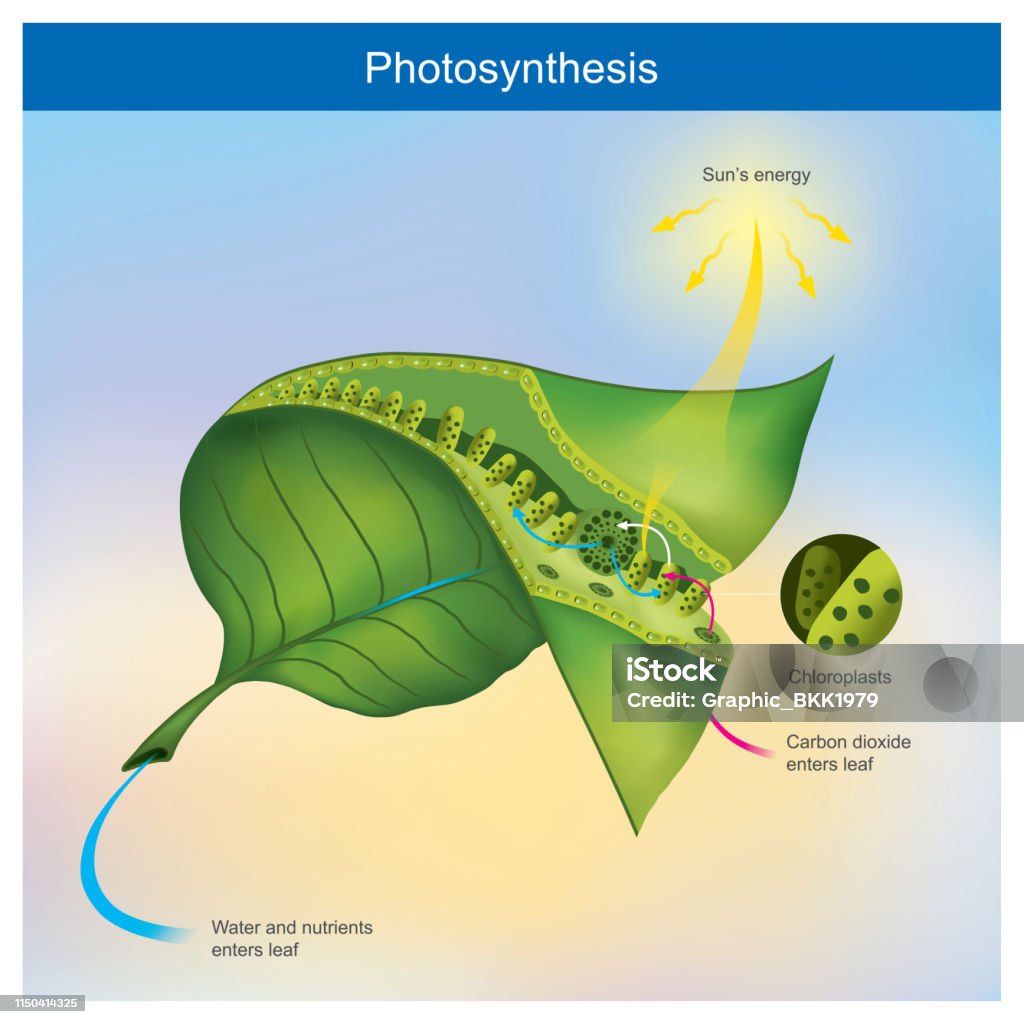Table of Contents
Scientist Blackman first proposed the photosynthesis equation in the year of 1905. Photosynthesis is an enzyme-regulated anabolic process of manufacturing organic compounds inside chlorophyll-containing cells. The process of photosynthesis is a complicated oxidation-reduction process resulting in the oxidation of water and reduction of CO2 with the help of sunlight as a source of energy.
The photosynthesis equation is as follows,
6CO2 + 12H2O ——SunlightChlorophyll———> C6H12O6 + 6H2O + 6O2
The whole process consists of two successive series of reactions.
The first reaction (photosynthesis equation) requires light and is known as Light or Hill’s reaction or Primary photochemical reaction. This reaction takes place inside thylakoid membrane of granum.
Second reaction does not require light and is known as Dark reaction or Blackman reaction or Calvin -Benson cycle or Chemical reaction. This reaction takes place in stroma of chloroplast.
On the basis of this reaction, the following statements may be mentioned-
- 6 molecules of CO2 and 12 molecules of H2O (reactants of photosynthesis) are utilized to form one molecule of glucose, 6 molecules of H2O and 6 molecules of O2.
- The amount of oxygen evolved is equal to the amount of CO2 utilized.
- Solar energy is trapped in glucose molecule as chemical bond energy, about 686 kcal of energy is stored per gram mole of glucose.
- Oxygen is evolved as by-product in the process.
- The amount of metabolic water is formed in the process is utilized by the plant body.
- The evolved oxygen in the process is liberated through the stomatal openings.
Site of photosynthesis:
- Photosynthesis generally takes place in all green parts of the plant body. In lower plants like algae and green bacteria the whole plant body takes part in photosynthesis.
- In higher plants, leaves are the main organ of the process, although young stems of some herbaceous plants also acts as organs of photosynthesis.
- Mesophyll tissues of leaves contain two types of parenchyma- 1. palisade 2. spongy parenchyma. Those are rich in chloroplasts. In higher plants these cell layers are the major sites.
- Photosynthesis also occurs in the green parts of stem phanimonsa (Opuntia), root (Orchid), assimilatory root of Gulancha, green algae (Spirogyra, Volvox, Nostoc, Chlamydomonas, Chara etc.)
- Unicellular animals like Euglena, Chrysamoeba, and some green bacteria (Rhodopsudomonas, Rhodospirillum) etc.

Robin Hill (1937) illuminated the isolated chloroplasts of Stellaria media in the presence of leaf extract of hydrogen acceptors and in the absence of CO2. The chloroplasts evolved oxygen.
Photosynthesis equation:
12A + 2H2O ——SunlightChlorophyll———> 2AH2O + O2
The hydrogen acceptors (A) (e.g. ferricyanides, chromates etc.) are also called Hill oxidants. This reaction involving the production of oxygen by the illuminated chloroplast in the absence of CO2 fixation is called the Hill reaction.
Ruben and Kamen (1941) and Ruben et al (1941) suspended chlorella in water having heavy isotope of oxygen O18, instead of natural oxygen O16. The suspension was illuminated. Oxygen evolved was tested by means of mass spectrometer. It proves that oxygen evolved during photosynthesis comes from splitting of water.
Photosynthesis equation:
16CO2 + 12H2O18 ——SunlightChlorophyll-Enzyme——–> C6H12O6 + 6H2O + 6O182
Part of the spectrum used in photosynthesis has a wavelength between 400-700 nm. It is called photosynthetically active radiation (PAR). The wavelengths of light most efficient in photosynthesis are those of red light. Green light is least effective in photosynthesis.
Facebook Link: https://www.facebook.com/share/JedGga3onuwKpLwx/
Related notes: https://thebiologyislove.com/the-formation-of-nodule-by-rhizobium-species/
Must read: Useful and important Numbers for Cell culture

